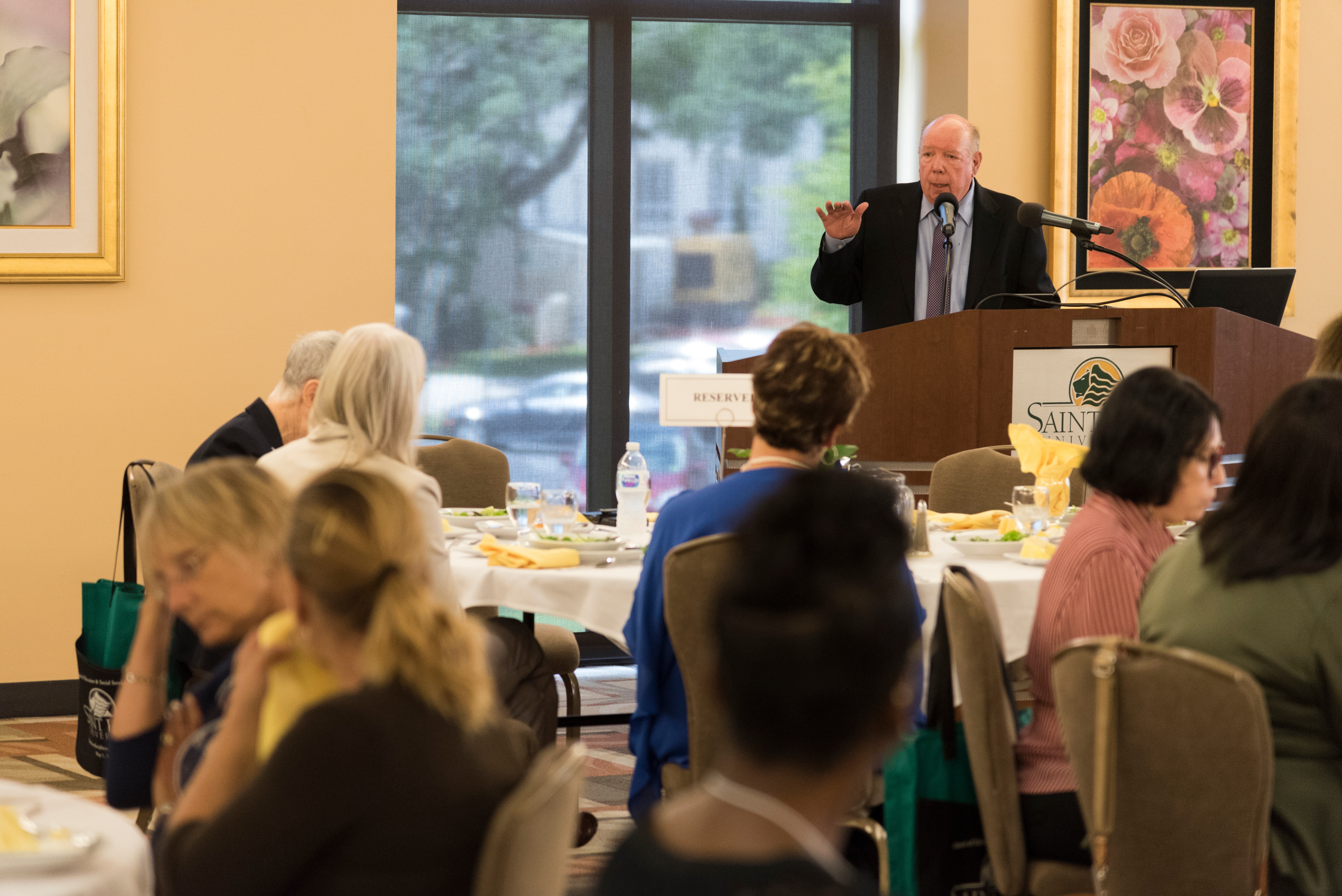Alumnus and Hospital Executive Describes the Seriousness of the National Opioid Crisis
Saint Leo University prepares professionals for social services field and provides continuing education and leading speakers in the field

Saint Leo University prepares professionals for social services field and provides continuing education and leading speakers in the field

Saint Leo alumnus and supporter John Picciano '69 drew on his extensive professional background in clinic social work, mental health, and hospital management to give a university audience a view into the seriousness of the opioid epidemic. The alumnus and Board of Trustees member has the direct experience of a clinical social worker who has dealt with addicts and families and the broad perspective of an executive in the behavioral health care sector. He is the chief executive officer of Oglethorpe Inc., a company that provides management centers to hospitals, clinics, and wellness centers, including facilities that specialize in behavioral health and addiction treatment.
Picciano's talk, titled "Shedding Light on Addiction," was [photo 1- vertical photo with this paragraph] the keynote address for an inaugural interdisciplinary conference hosted by Saint Leo University's School of Education and Social Services. The school offers graduate and undergraduate degree programs in education, criminal justice, social work, and human services. The conference was organized to allow educators from the school's various academic departments and professionals at community organizations and agencies to come together and discuss possible solutions to social issues that cut across numerous professional fields. The opioid epidemic is such a pressing example that Picciano offered to lend his insights at his alma mater.
"The epidemic is just beginning," he warned. Numbers of cases and deaths are growing, he said. The widespread misuse of fentanyl, a synthetic opiod that is much more potent than morphine, is a culprit in making the epidemic worse. Although fentanyl can be used legally by doctors, drug dealers are making it and mixing it into the batches of drugs they illegally sell to addicts, and making the drugs more dangerous. Picciano cited as an example the recent news from an official toxicology report that high levels of fentanyl were blamed for the overdose death of musician Prince in April 2016.
Picciano also described the challenges of everyday people he has known who came into treatment between the ages of 20 and 35. Typically, they began using some kind of drug in their early teens and eventually reached opioids. Some factors these patients or clients faced were common to others with addictions: a severe trauma of some sort that left them with deep abandonment psychologically. Anxiety, psychic pain, depression, and or poor self-esteem flow from that unmooring; when no other way to cope with anxiety is taught or available, people can self-medicate and fall into substance abuse, he said. "It's self-defeating, but it's understandable," Picciano said.
Getting sober and healthy is complicated; it requires several steps, he said.
Picciano emphasized that it is vital that counselors thinking of working in this field possess the empathy and compassion to see addicts as a potentially loving, underdeveloped human beings. Those patients whose addiction started in their teens never went through the normal process of maturing into adults who can form close bonds with other people, he added. "You've got a sober 13-year-old … a case of arrested development," he said.
"The longer the treatment, the better the prognosis," he added. Patients will need therapy group support for a long time, he said, after the first steps of treatment.
It is also vital not to give up on people, even if they relapse, he said. It can take many attempts to reach sobriety, he added.
Picciano's prime example is the case of former Major League baseball player Darryl Strawberry. Picciano's company now operates two centers with Strawberry, but the athlete had a long and well-publicized road through addiction. Strawberry has now been sober for 14 years, Picciano said. Picciano helped write a recent book that chronicles the events of the athlete's life with commentaries from professionals: Don't Give Up on Me: Shedding Light on Addiction with Darryl Strawberry.